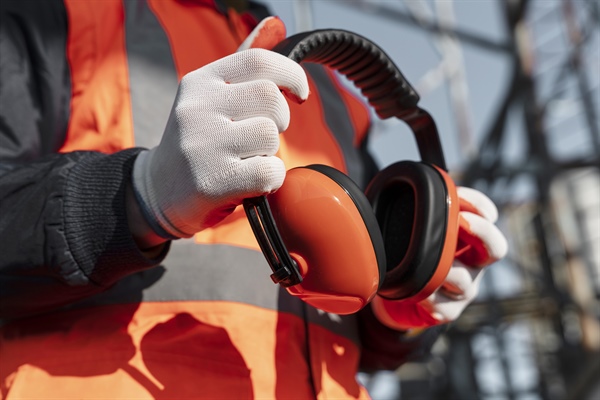
What Is Excessive Noise?
Excessive noise is any sound that is loud enough to cause temporary or permanent hearing loss, interfere with communication, or create stress and discomfort. Noise levels are typically measured in decibels (dB), and the risk of harm increases with both the intensity and duration of exposure. Common sources of excessive noise include:
- Workplace Machinery: Tools like drills, saws, and factory equipment.
- Transportation: Aircraft, trains, and road traffic.
- Entertainment Venues: Loud music at concerts or nightclubs.
- Household Appliances: Vacuum cleaners, lawnmowers, and power tools.
Health Risks of Excessive Noise
Exposure to high noise levels can lead to several short- and long-term health issues, including:
- Noise-Induced Hearing Loss (NIHL): Prolonged exposure to sounds above 85 dB can damage the sensitive structures in the inner ear, leading to permanent hearing loss.
- Tinnitus: A persistent ringing or buzzing in the ears caused by exposure to loud sounds.
- Cardiovascular Stress: Chronic noise exposure has been linked to increased blood pressure, stress hormone release, and a higher risk of heart disease.
- Sleep Disturbance: Loud or continuous noise can interfere with restful sleep, leading to fatigue and reduced cognitive function.
- Reduced Productivity: Noise can make it difficult to concentrate and communicate, particularly in work or study environments.
Identifying Noise Risks
Understanding and assessing noise risks is the first step in managing them. Situations where noise risks may arise include:
- Industrial and Construction Sites: Operations involving heavy machinery and tools.
- Urban Environments: Areas with constant traffic or large crowds.
- Music and Entertainment Settings: Amplified sound systems and live performances.
In workplaces, noise levels should be regularly measured using a sound level meter to identify hazardous areas and activities.
Managing Noise Safely
Effective noise management requires a combination of engineering controls, administrative measures, and personal protective equipment (PPE). Here are some key strategies:
1. Engineering Controls
These involve reducing noise at the source or along its path, such as:
- Equipment Maintenance: Keeping machinery and tools in good condition to minimise noise.
- Soundproofing: Installing barriers, acoustic panels, or enclosures around noisy equipment.
- Noise-Dampening Materials: Using materials that absorb sound, such as carpets, foam, or curtains.
2. Administrative Controls
Administrative controls focus on managing exposure to noise, including:
- Scheduling: Rotating employees to limit time spent in noisy environments.
- Quiet Zones: Designating areas for rest and communication away from noise sources.
- Training: Educating workers on the risks of noise and how to protect themselves.
3. Personal Protective Equipment (PPE)
When noise cannot be sufficiently reduced through engineering or administrative controls, PPE becomes essential. Options include:
- Earplugs: Disposable or reusable plugs that fit into the ear canal.
- Earmuffs: Over-the-ear protection that reduces noise levels.
- Custom Hearing Protection: Molded devices tailored to an individual’s ears for optimal comfort and effectiveness.
4. Noise Monitoring and Assessment
Regular noise monitoring ensures that control measures remain effective. Employers should:
- Conduct Noise Surveys: Measure noise levels at various locations and times.
- Review Results: Identify areas where additional controls are needed.
- Document Findings: Maintain records of noise assessments and implemented measures.
Legal and Regulatory Requirements
Noise regulations are designed to protect individuals from excessive exposure and vary by region. Common requirements include:
- Exposure Limits: Setting maximum allowable noise levels, often 85 dB for an 8-hour workday.
- Hearing Conservation Programs: Mandating measures such as regular hearing tests and employee training.
- Compliance Inspections: Enforcing noise control standards in workplaces.
Failure to comply with noise regulations can result in fines, legal action, and increased risk of harm to workers.
Protecting Yourself and Others
If you are concerned about noise exposure in your environment, follow these steps:
- Assess the Noise: Identify sources and measure their intensity, if possible.
- Limit Exposure: Use PPE, avoid prolonged exposure, and take regular breaks in quieter areas.
- Seek Professional Advice: Consult noise control experts or occupational safety specialists for guidance.
Conclusion
Excessive noise is a serious yet manageable hazard. By understanding its risks and implementing effective controls, we can reduce its impact on health, productivity, and overall well-being. Remember, noise control is not just about compliance; it’s about creating environments where people can thrive.